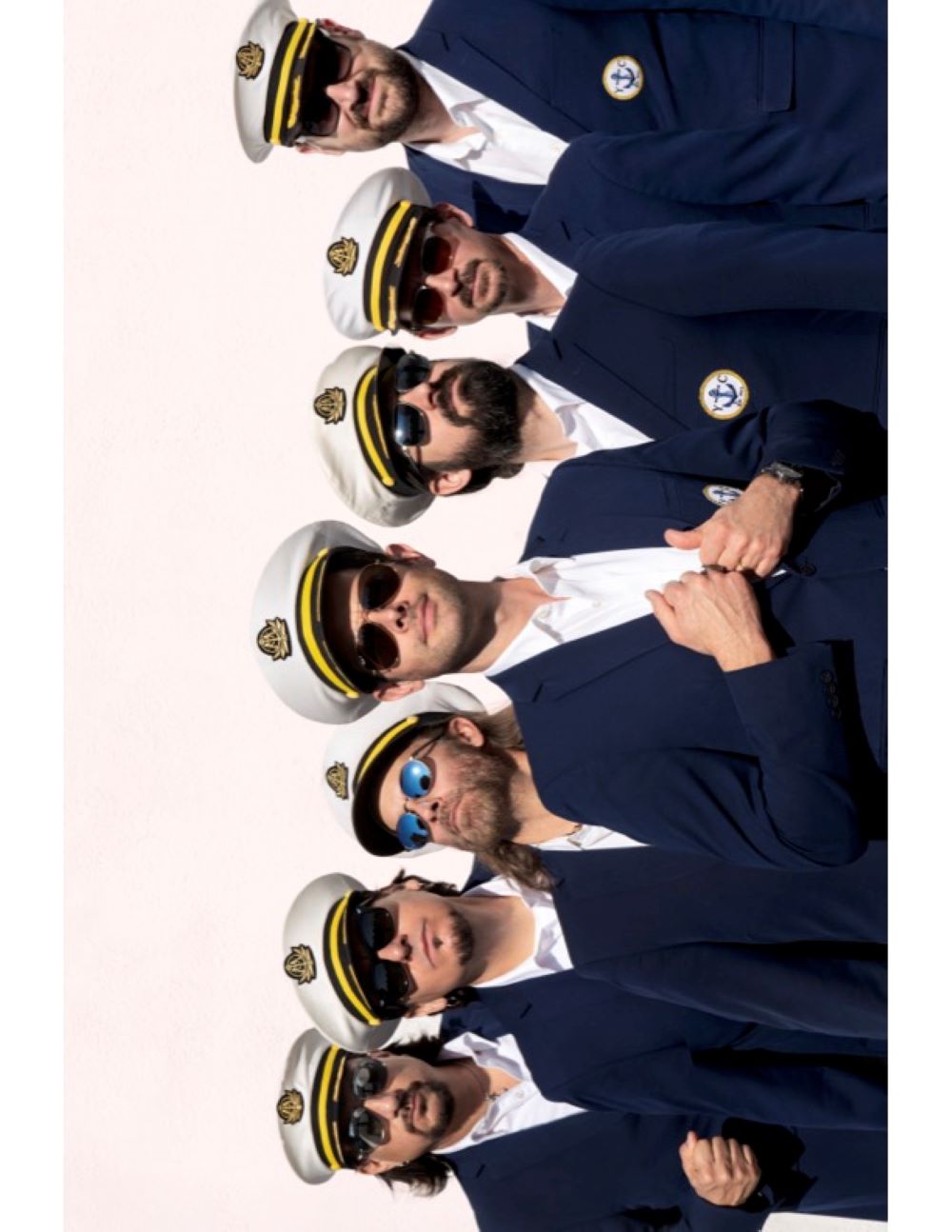
Photo Courtesy of ThinkStock/Jupiterimages
As with any news of how ultra high net worth is being defined and distributed in the world, there is good news and challenging news—and the latest Knight Frank Wealth Report 2013 has both.
One of the good things is that their research methods are pure, and the report is one of the very few that tracks the attitudes and interests of the ultra high net worth population by surveying private investment bankers and others who work with this group on a daily basis. From these data, present and future attitudes can be extrapolated and predicted with reliable degree of veracity.
First, news of financial challenge: It has been six years since the early signs of the financial crisis started to emerge, but, according to the Knight Frank Wealth Report, the global economy is still feeling effects. “In 2012," the report states, “economic growth slipped to its lowest level since 2009. While the signs are that growth will pick up this year, many major economies are still performing well below what trend, with some struggling to achieve any improvement in economic output at all. But despite this gloomy economic backdrop, there was still room for wealth creation in 2012."

In 2012, those with USD $30M or more in net assets rose by 5 percent last year, or nearly 8,700, according to data prepared exclusively for The Wealth Report by Wealth-X, a wealth intelligence firm. The combined wealth held by this group also grew by 2 percent, or US$566bn, to just over US$26tr last year.
So here is the forecast: Over the next 10 years, 95,000 people are predicted to break the US$30m wealth barrier—a cumulative 50 percent rise, which will take the total number of ultra high net worth individuals across the globe to around 285,665.
Mykolas Rambus, CEO of Wealth X added, "The US will remain dominant in terms of numbers of ultra high net worth individuals and billionaires over the next 10 years. The industrial revolutions in the US and the UK acted as a base for the large concentration of wealth still evident in these areas. Within the US, the biggest rise in the concentration of HNWIs (High Net Worth Individuals) is expected to be outside New York, despite its status as the world’s pre-eminent global city. The Wealth-X survey of HNWI populations in the world’s leading cities shows that Houston, San Francisco and Dallas will see the most significant rise in HNWIs in the US over the next 10 years. New York, however, will still boast the largest number of HNWIs of any city in the world in 2022." (Photo courtesy of ThinkStock/Adam Gault)

No doubt because of this, the housing market in New York has reached astronomical heights, according to a recent New York Times article, entitled 'Billionaire's Clubs Homes Grow As Do High End Home Prices' (March 7, 2013). The author also quotes the Knight Frank Wealth Report, saying that international buyers are purchasing multi-million dollar properties in New York, as well as in London and Miami, but the Big Apple is a favorite.
There are reasons for this, most of which are understood in terms of global risk, and how wealthy cities in the United States are considered safe havens from such risk. According to Knight Frank Wealth Report, the risks deal with the possible impact of punitive tax policies, that include property tax, and other taxes that "come down hard" on the wealthy.
According to Knight Frank's Attitude Survey, "France plans to hit high earners with a tax rate of up to 75 percent , while countries including Spain and Ireland have also imposed wealth or property taxes. In Hong Kong and Singapore, these taxes are designed to address specific concerns, such as an overheating housing market. In other countries, governments are searching for ways to repair their balance sheets."
But there are other risks seen by the high net worth population. Here are some mentioned by the Wealth Report, taken from a group called World Risk Review:
(Photo courtesy of ThinkStock/Goodshoot)

Intensification of the Euro Crisis: Even core Eurozone countries saw their economies shrink in the second half of 2012. An intensified Eurozone crisis could destroy growth in core European states and further stifle economic recovery in the UK, potentially sending the country back into recession.
Sovereign Default by Argentina: Risk of a technical default lingers while Buenos Aires wrangles with the US courts over US$1.3bn that US investors say is still owed to them following Argentina’s US$100bn default in 2002. This, combined with the currency devaluation imminent in 2013, will entail significant destruction of value.
Rivalry Between Political Parties in the Levant and North Africa: The renaissance of Islamist parties in the region is fueling rivalry between the ruling families of Qatar and Saudi Arabia for the hearts and minds of the Sunni world.
Growing Inequality in the US: The danger of ever-greater wealth disparities is the risk that might destroy the open system that made America rich and allowed its ultra high net worth population to flourish.
Barriers to Investment in Russia: An independent judiciary and legal framework is a pre-requisite for creating a vibrant investment environment to attract the billions of dollars required to develop infrastructure and diversify Russia’s economy. Without it, the country risks ending up as a simple commodity exporting nation. (Photo courtesy of ThinkStock/Creatas)

These are the challenges, according to World Risk, and quoted in Knight Frank. So, what are the solutions? The continuing relevance of tangible asset purchases is a major trend, with property acquisition being a major driver. And, as the Knight Frank Wealth Report states "Prime residential and commercial property in relative risk-free locations has always attracted investors in times of economic and political turbulence. There is something comforting about tangible assets…that will retain their inherent value over time, even if prices dip in the short term. This flight to safety continues around the world and is helping to drive up prices in the most sought after locations.”
More new billionaires want houses in London’s Holland Park, a villa on The Peak in Hong Kong, an Upper East Side apartment in Manhattan, or a ski chalet in Courchevel, France. Ironically yet understandably, the instability of the global economy has promoted more purchases of luxury homes, residences and apartments, especially in safe haven cities. Last year, a little over a 1.4 percent of the ultra high net worth's total net worth was "accounted for by their main residences and second homes." This trend, according to Knight Frank, is set to continue. Interestingly, however there is more to property purchasing than just buying houses or space, residential or commercial property.

The Knight Frank Report's Attitude Survey also shows that the lifestyle associated with the property location, both primary and secondary, is very important to the buyer. Given the increased importance that buyers now place on their children’s education—85 percent of Asian and 81 percent of Latin American clients are likely to send their children to university overseas—the ongoing popularity of homes in cities with a number of prestigious universities are very important drivers to multi-million dollar property purchases. Overall, according to this report, "almost 50 percent of the high net worth population have a second-home townhouse or apartment, compared with 20 percent owning waterfront homes and 10 percent ski properties." According to their data, the ultra-wealthy in South America, Africa, and Europe are looking toward the US, Switzerland, Monaco and Australia.
But there are other tangible asset strategies used by this population also. Increasingly, newer templates of hands-on philanthropy, such as impact investing and venture philanthropy, are attracting younger millionaires and billionaires, who relish combining charitable activities with their business skills.

Finally, however, comes the intense interest in passion investing. I have written three articles on this strategy for JustLuxe, and it seems that in 2012 and projections into 2013, the process and interest has become more widespread than ever before, especially in emerging markets. According to China’s Hurun Report, 64 percent of the country’s millionaires are currently building collections. “China is now the world’s largest market for art,” says Viola Raikhel-Bolot, the firm’s Head of International Art Advisory. China’s share of the global market in 2011 was 30 percent, up from 23 percent in 2010, compared with 29 percent for the US (down 5 percent) and 22 percent for the UK.
Dr. Rachel Pownall, Associate Professor of Finance at Tilburg University, in the Netherlands, who specializes in art finance and alternative investments, is quoted in the Knight Frank Report: "Taken to one extreme, some collectors are willing to forgo financial reward for emotional return and love of the asset—wine can be drunk, and art offers an emotional and aesthetic dividend. These positive effects offer benefits that may subsume the desire for financial reward."

According to the Knight Frank data, the purchase of contemporary art (1970 to the present) has seen the biggest growth over recent decades and this trend continued in 2012. Sotheby’s (US$375m) and Christie’s (US$412m) set new sale records at their November auctions in New York. Personal bests were also achieved by a number of artists including Jackson Pollock (US$40m), Franz Kline (US$40m) and Jeff Koons (US$34m), while Mark Rothko’s No. 1 (Royal Red and Blue) made over US$75m, and then Edvard Munch’s The Scream, for $120MUSD in May of last year.
Taken as a whole, The Knight Frank Wealth Report sets an optimistic tone, as the economy hopefully moves from a torpid Reformation to a lively Renaissance economy. (Photo courtesy of Christie's)














